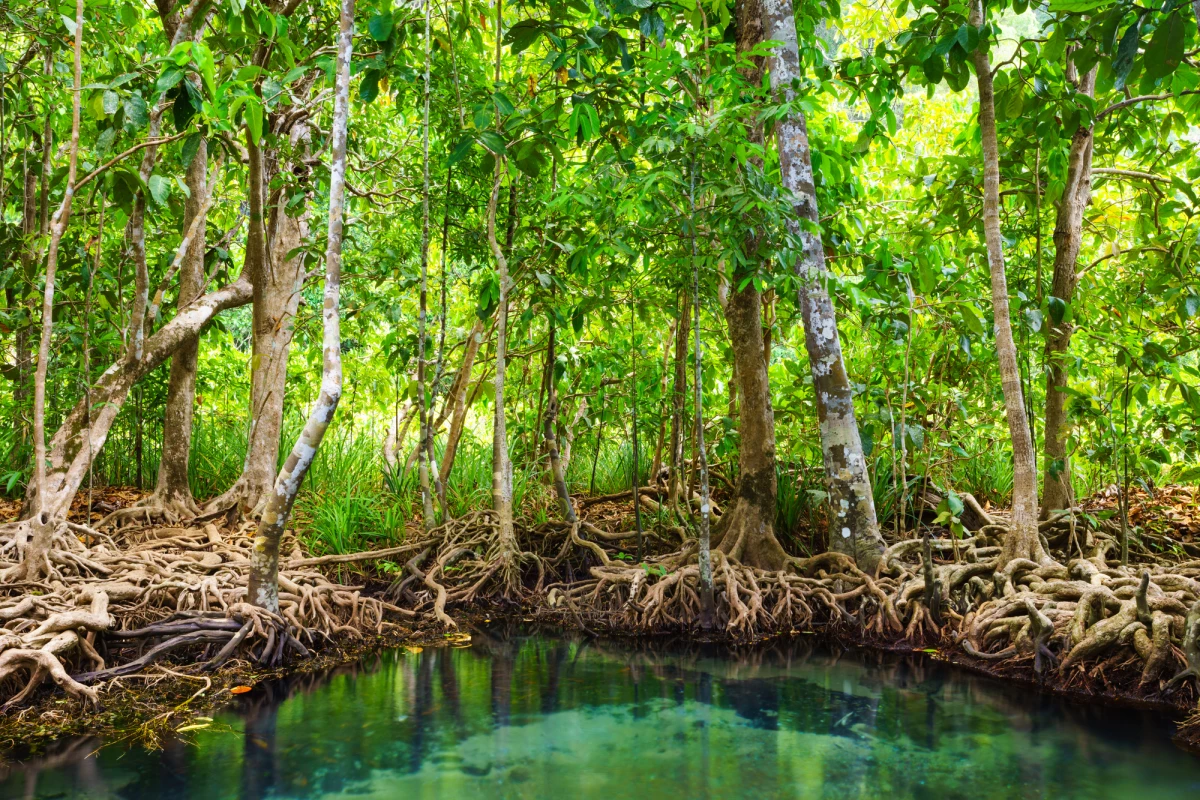Solar stills can be a very useful way to produce drinking water from dirty or salty water, but there’s plenty of room for improvements in efficiency. Now, engineers at Virginia Tech have developed a “synthetic tree” inspired by mangroves, that mimics the natural process of transporting water up through roots and stems into leaves.
The basic design of a solar still has been built on for decades. It usually starts with a reservoir of water currently unfit for drinking, whether it’s too salty, dirty or otherwise contaminated. This water is wicked up through an absorbent material which is then heated by sunlight, evaporating the water into the air. The water vapor hits a sloped ceiling and condenses, running down into a collection tray.
Different devices are variations of that basic design, using different materials that are better at absorbing either water or heat from sunlight, such as spongey carbon, diaper materials, aerogel, or “roses” coated in black polymer.
Most of these existing devices work using capillary action, where the liquid climbs up through a narrow space by sticking to the edges and dragging other molecules upwards thanks to the liquid’s internal cohesion. But this method doesn’t scale up very efficiently.
So for the new study, the Virginia tech team looked to nature for a more efficient water wicking system. Capillary action plays only a minor part in water movement for plants – most of the water moves via transpiration. This is the process that allows plants to efficiently suck water up from their roots, through their trunks and branches, and out through their leaves as water vapor.
Transpiration involves a kind of suction, driven by the lower water potential in the air around the plant. This encourages water molecules to move out of the plant into the air, increasing tension on the water molecules inside the plant and pulling them upwards. Theoretically, this mechanism should be able to pump water to any height.

The Virginia Tech team’s new design is based on transpiration. Their synthetic tree is made up of 19 plastic tubes 6 cm (2.4 in) high and with an inner diameter of just 3.175 mm (0.1 in). These pull water up to a porous ceramic disk coated in graphite with a surface area of 22.9 cm2 (3.5 in2), which acts like the leaf as the evaporating surface.
In tests, the researchers found that the synthetic tree was able to harvest three times more water than using a bulk reservoir alone. The team says that future work should involve testing taller trees, adding more leaves, and using membranes to filter salt out of the water.
“We expect our tree-based solar steam generator will be of interest for applications in underground water extraction and purification,” says Jonathan Boreyko, an author of the study. “The ultimate goal is to achieve a suction pressure strong enough to pull ocean water through a salt-excluding filter without requiring a mechanical pump, analogous to how mangrove trees are able to grow in ocean water.”
The research was published in the journal Applied Physics Letters.
Source: AIP Publishing




